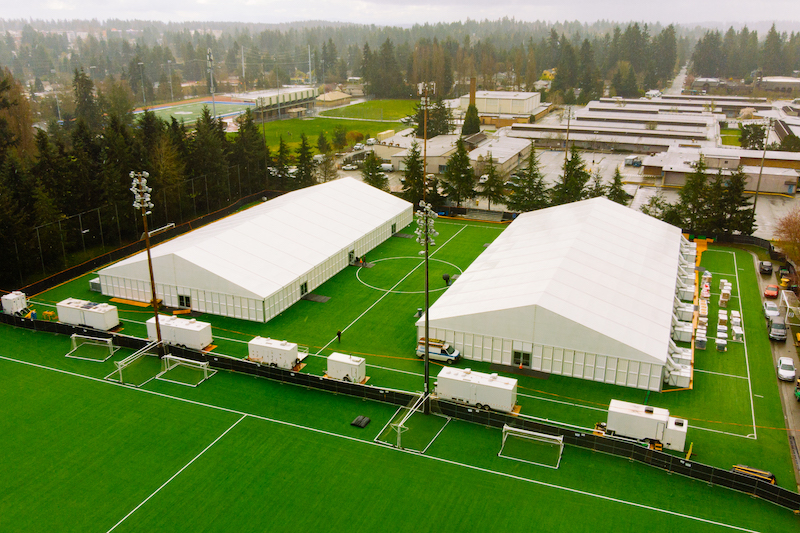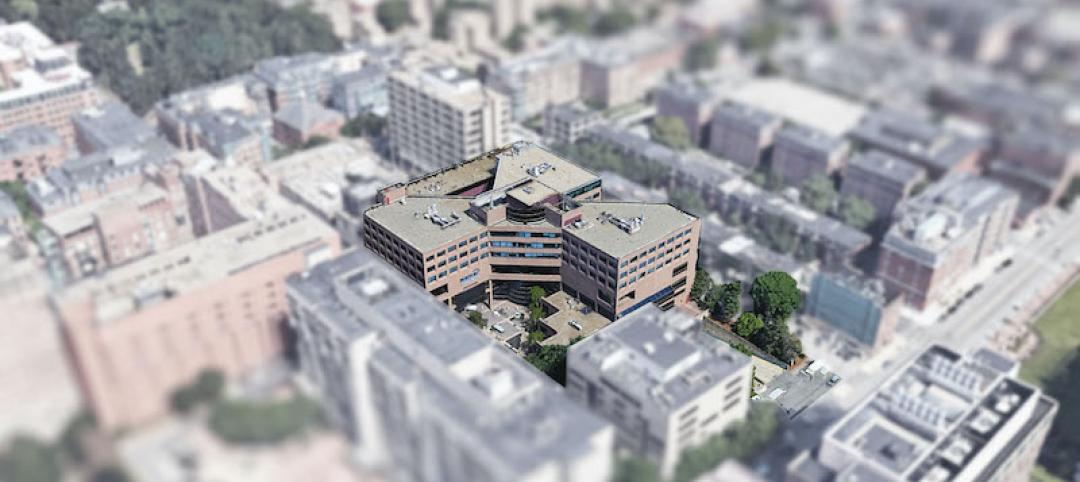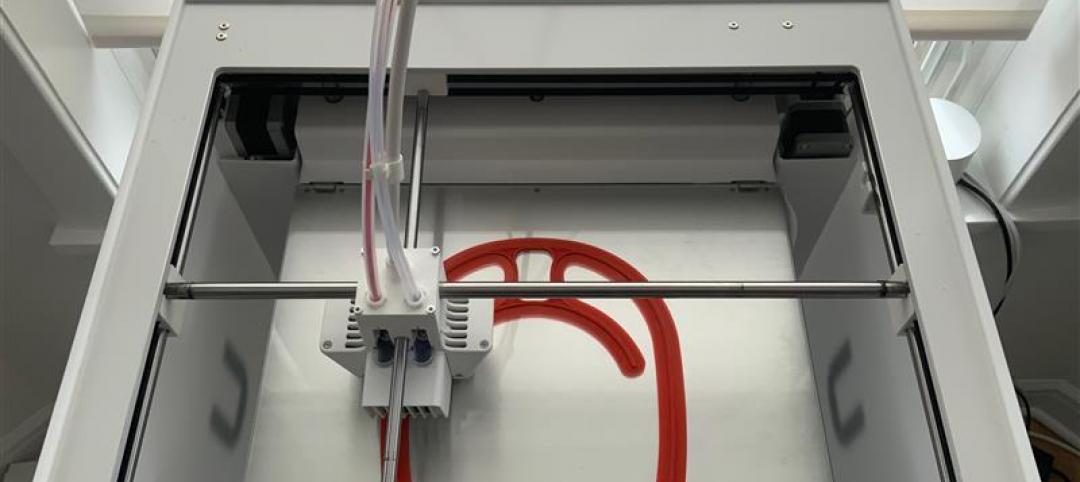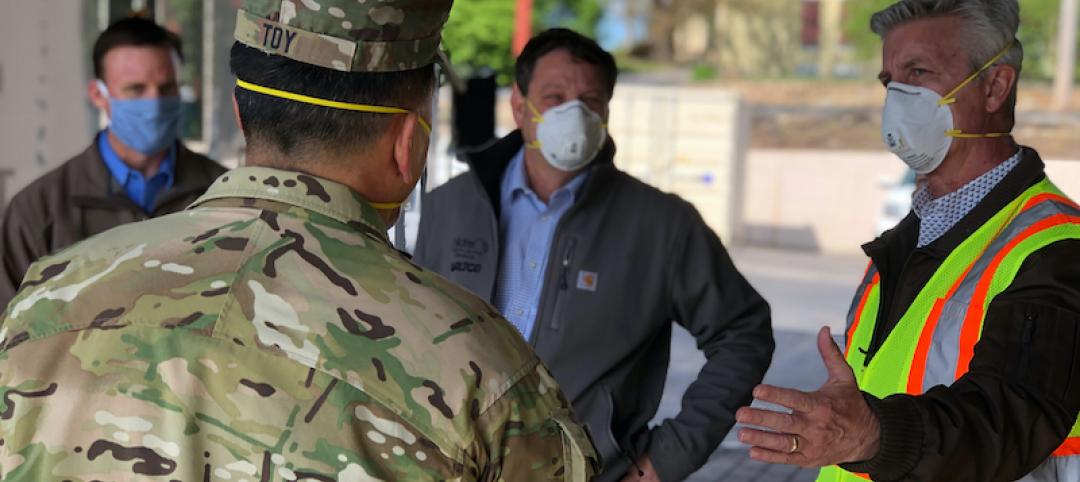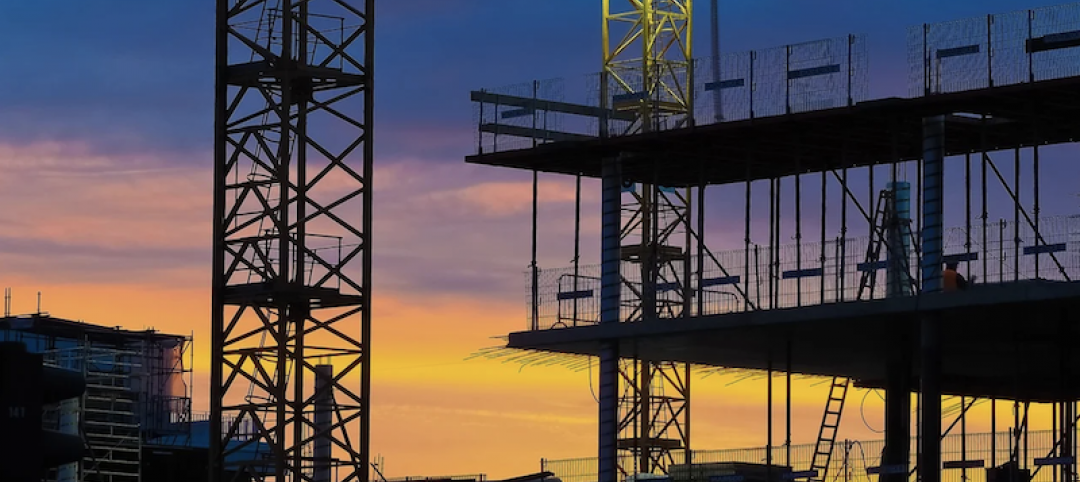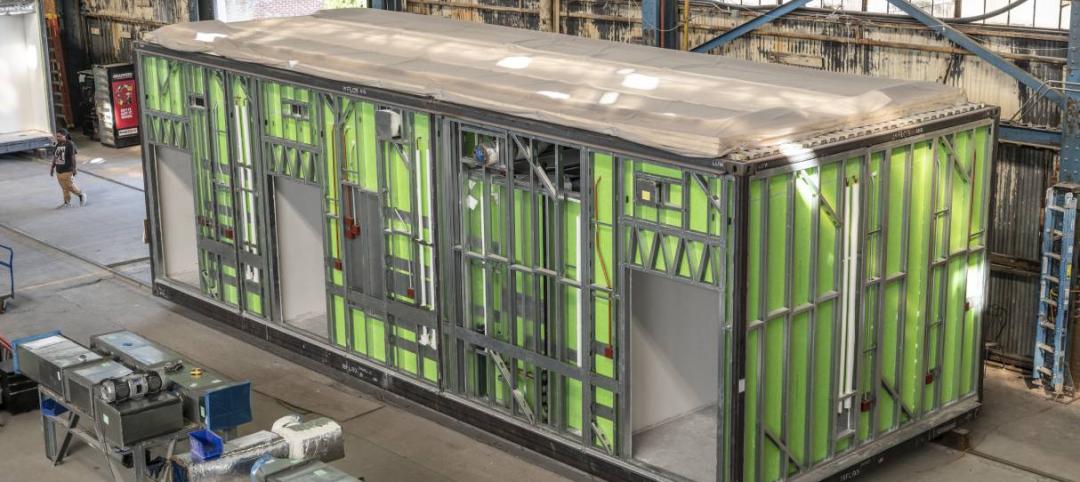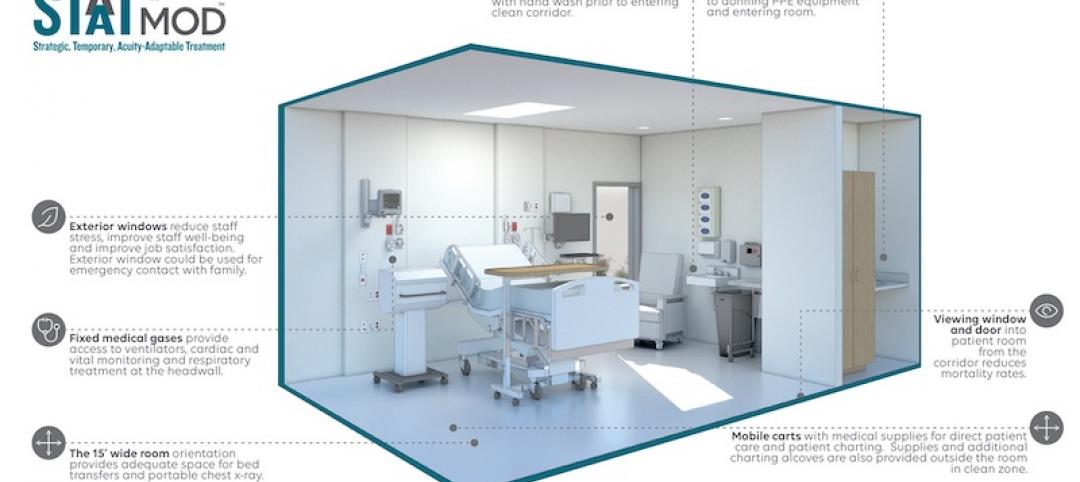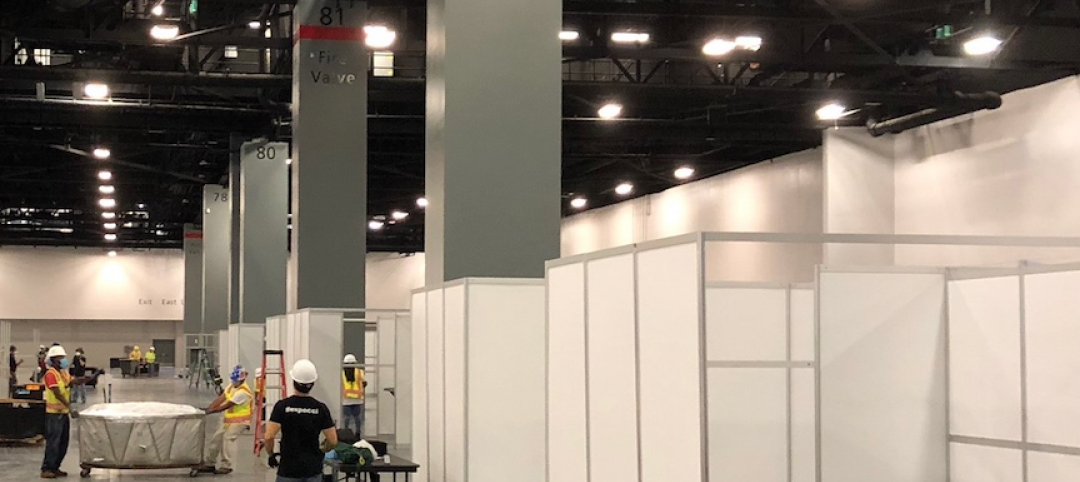About 18 months ago, officials from King County, Wash., which includes Seattle, approached DLR Group about developing housing solutions for the county’s homeless, who by one recent count totaled nearly 11,200, with just under half of those homeless unsheltered by conventional human habitude.
DLR Group, a national architecture and engineering firm, had been working on this project for a year when, on January 20, the first case of the coronavirus in the U.S. was reported in the state of Washington. As of April 4, Washington State’s Department of Health estimated that of the state’s 7,591 cases of illness and 310 fatalities attributed to COVID-19 infection, 2,898 cases and 200 deaths were in King County.
As part of its efforts to stem the virus’ spread, King County and DLR Group entered into an emergency contract. Working with the county and the builder Howard S. Wright (a division of Balfour Beatty), DLR Group developed a rapid-response solution to transform multiple sites into facilities equipped to quarantine patients who are incapable of self-quarantine, including the homeless.
The goal is to add 2,500 beds across 12 sites that range from converted motels and warehouses, to temporary structures built on parking lots and sports fields. As of this week, 800 beds will be online in four to six facilities, says Lori Coppenrath, DLR Group’s Justice and Civic Planner, who is spearheading this effort for her firm. She spoke with BD+C last Thursday.
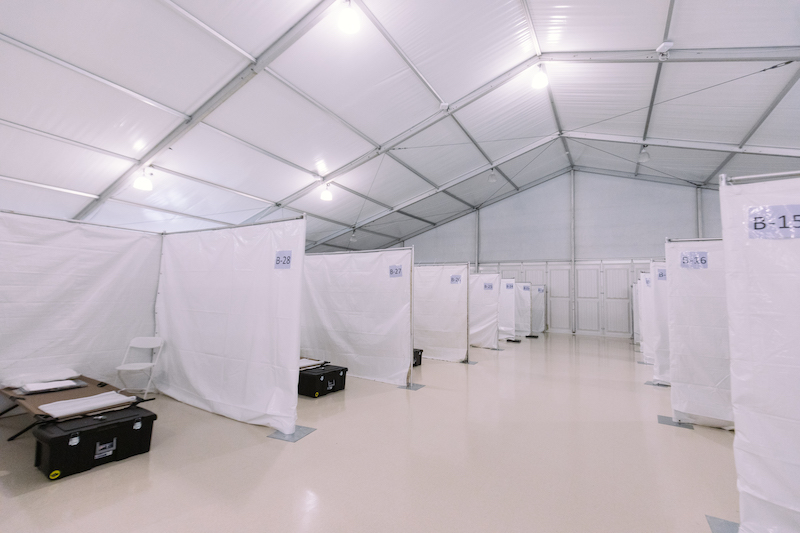
Some of the temporary structures are huge tents, inside of which are barracks-like beds.
One of the county’s goals is to move people out of hospitals who aren’t critical but still need a safe, monitored environment to recover fully. Each of these Assessment and Recovery Centers is typically conceived, studied, built, and permitted within two weeks, to get patients into them quickly.
Testing for the virus is actually done offsite, says Coppenrath, to avoid infecting anyone in a Center who is not currently sick or has tested negative to COVID-19. In developing the concept for the Centers, the building team and county devised flow diagrams for how patients and staff would move through the Centers. Those diagrams incorporate transportation needs with defined drop-off/pick-up areas, parking, and emergency and fire accessibility.
Coppenrath says this project has been an exercise in overcoming barriers. “These Centers are like field hospitals, so you have to figure out how to offer basic services to people who might be there a month or longer.” The design includes storage that minimizes the potential for contamination from other patients’ property. The Centers also need to provide areas where people can wash their hands frequently and shower. The facilities must be ADA-accessible.
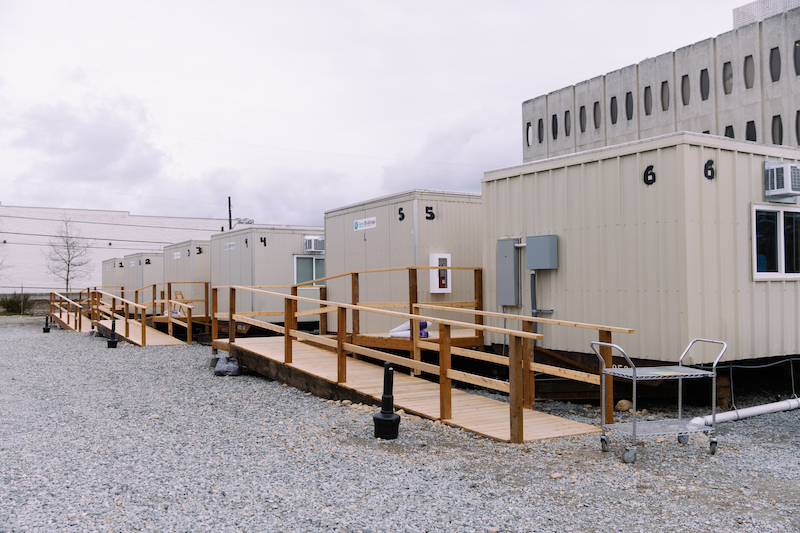
Some of the Assessment & Recovery Centers are ADA-compliant trailers, with individual living quarters that include kitchens, baths, and closet space.
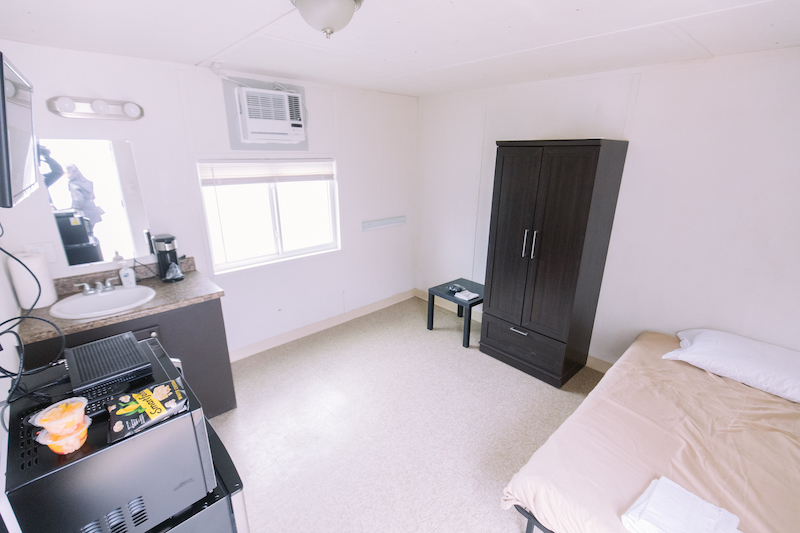
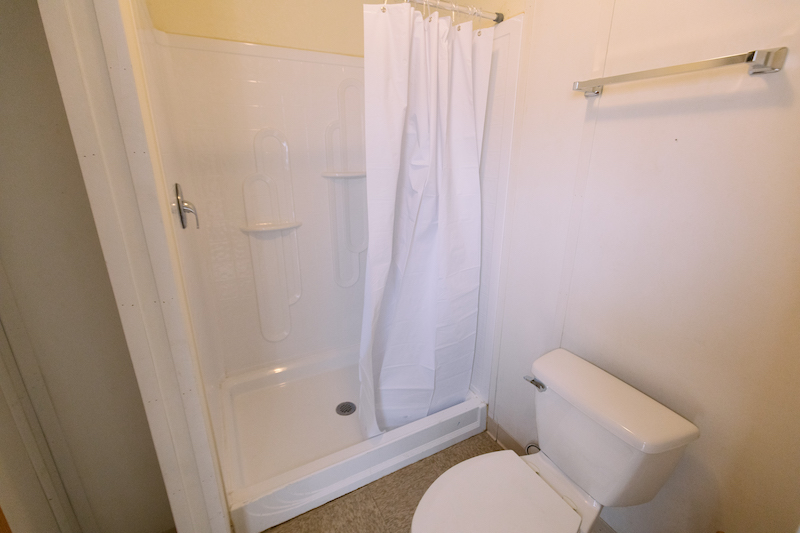
Food services and waste management are essential. The Centers also have to give patients something to do while they’re quarantined. “We thought it would be a good idea to give each patient an iPad, so they could watch movies and TV, but then you have to figure out how to recharge them and provide WiFi.”
Finding materials and components on short notice can also be challenging: Coppenrath notes that bathroom/shower trailers are “just not available anymore.”
On a positive note, Coppenrath says that DLR Group has been able to call upon “different levels of leadership” to lift roadblocks and keep things moving forward.
Related Stories
Coronavirus | Apr 15, 2020
DCAMM teams with SLAM and Gilbane Building Company to re-occupy Newton Pavilion for temporary quarantine of homeless during COVID-19 pandemic
First and only quarantine shelter in Boston-area to convert a shuttered hospital for homeless patient occupancy.
Coronavirus | Apr 15, 2020
3D printing finds its groove fabricating face shields during COVID-19 crisis
The architecture firm Krueck + Sexton is producing 100 shields for a Chicago-area hospital.
Coronavirus | Apr 14, 2020
COVID-19 alert: Missouri’s first Alternate Care Facility ready for coronavirus patients
Missouri’s first Alternate Care Facility ready for coronavirus patients
Coronavirus | Apr 13, 2020
COVID-19 alert: City conducts a 'virtual building inspection' to allow Starbucks and bank to open
Bothell, Wash., issues a certificate of occupancy to developer after inspecting the property online.
Coronavirus | Apr 13, 2020
Construction layoffs spread rapidly as coronavirus shuts down projects, in contrast to job gains through February in most metros
Association officials urge quick enactment of infrastructure investment, relief for hard-hit firms and pensions in order to save jobs in construction and supplier industries.
Coronavirus | Apr 12, 2020
How prefab can enable the design and construction industry to bring much needed beds to hospitals, faster
The outbreak of COVID-19 represents an unprecedented test for the global healthcare system. Managing the pandemic—and saving lives—depends largely on the availability of medical supplies, including the capacity of hospitals. But the United States lags behind other nations, with only 2.8 beds per thousand people compared to 4.3 in China and 12.8 in South Korea.
Coronavirus | Apr 10, 2020
HGA and The Boldt Company devise a prefabricated temporary hospital to manage surge capacity during a viral crisis
A STAAT Mod system can be ready to receive patients in less than a month.
Coronavirus | Apr 10, 2020
COVID-19: Converting existing hospitals, hotels, convention centers, and other alternate care sites for coronavirus patients
COVID-19: Converting existing unused or underused hospitals, hotels, convention centers, and other alternate care sites for coronavirus patients
Coronavirus | Apr 9, 2020
COVID-19 Design Innovation Grant: IDA offers $14,000 to spur design innovation for combating the coronavirus pandemic
The International Design Awards is looking for innovations in low-cost ventilators, in-home isolation pods, and reusable masks.
Coronavirus | Apr 9, 2020
COVID-19 alert: Robins & Morton to convert Miami Beach Convention Center into a 450-bed field hospital
COVID-19 alert: Robins & Morton to convert Miami Beach Convention Center into a 450-bed field hospital


